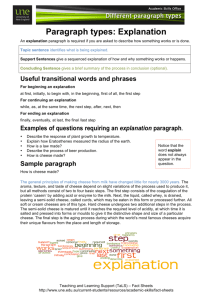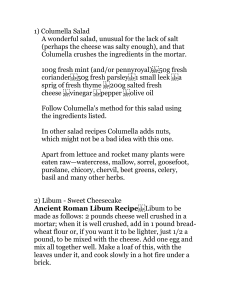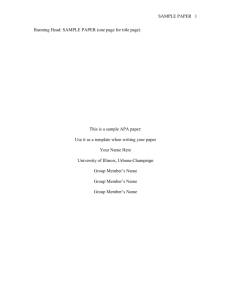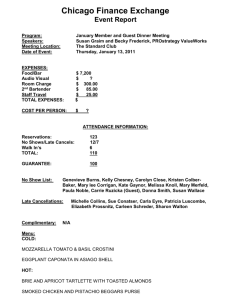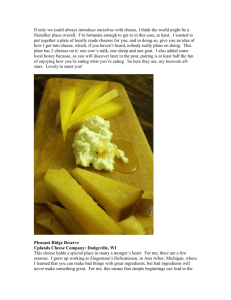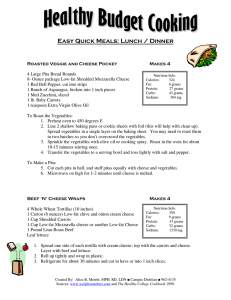Product Teaching Slides
advertisement
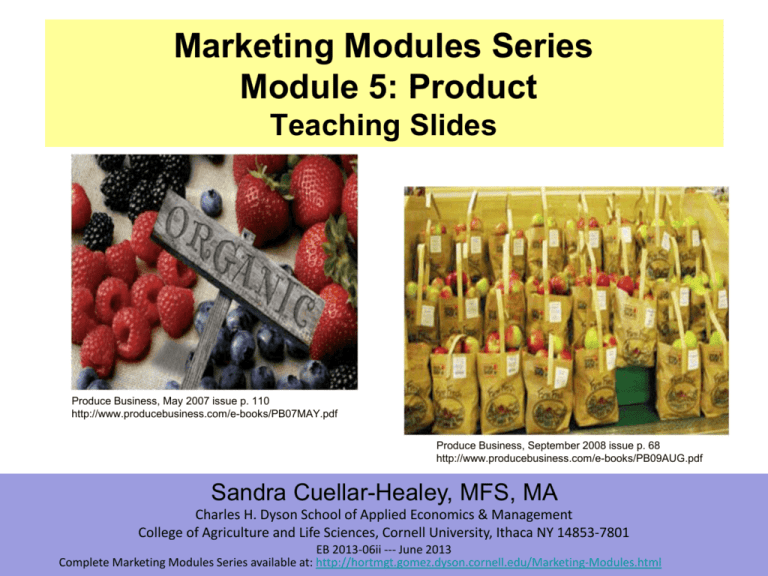
Marketing Modules Series Module 5: Product Teaching Slides Produce Business, May 2007 issue p. 110 http://www.producebusiness.com/e-books/PB07MAY.pdf Produce Business, September 2008 issue p. 68 http://www.producebusiness.com/e-books/PB09AUG.pdf Sandra Cuellar-Healey, MFS, MA Charles H. Dyson School of Applied Economics & Management College of Agriculture and Life Sciences, Cornell University, Ithaca NY 14853-7801 EB 2013-06ii --- June 2013 Complete Marketing Modules Series available at: http://hortmgt.gomez.dyson.cornell.edu/Marketing-Modules.html What is a Product? Bundle of characteristics and benefits – Physical/functional characteristics (size, color, design, ingredients, etc.) – Non-physical/non-functional (convenience, comfort, prestige, etc.) Should address the Needs, Wants and Expectations of Consumers in your Target Market! Types of Products • • • • • • • • Consumer Industrial Commodities Specialties Convenient Value added Impulse By-products Products – Key Attributes • Quality – Objective and subjective • Safety – Food safety • Availability – Location and time • Packaging – Functional and non-functional roles • Labeling – Positioning, promotion, information How do Consumers’ Characteristics Shape the Demand for Food? • Demographics – Age, gender, marital status, household size, education, income/occupation, geographical location • Psychographics – Attitudes, values and interests Rapidly aging population, more women in the workforce, more dual-income households, less time to buy, prepare and eat foods at home, increased concern for health, food safety and environment Demand for Food – Key Motivators Consumers’ Motivations and Attitudes • • • • • • • Nutrition Health Enjoyment Convenience Safety Compliance with reference groups’ norms Environmental/political Product Life Cycle (PLC) • Introduction • Growth • Maturity • Decline • Limitations of the PLC Product Strategy: What products/services to offer? Consider your target market and your firm’s strengths: • • • • • • • • • • What products to produce and sell? How many products to offer in a product line? What product mix (product lines) to offer? What brand name to use? Individual branding or family branding? What logo to use? Product bundling or product lining? What positioning strategy to use? What products to discontinue? What new products to add? Product Line A product line is a group of similar products/services offered by a single firm Example: Product Line: Fresh Vegetables Line length: Corn, carrots, cabbage, pumpkins, etc. Line length is a function of a firm’s objectives and resources! Product Mix The product mix is the assortment of products available from a particular firm Example for a farm store selling fresh produce & cheese: Product mix width: fresh vegetables, fresh berries, cheese Product mix length: • Vegetables: corn, carrots, pumpkins, etc. • Berries: strawberries, raspberries and blueberries • Cheese: cow cheese, goat cheese, sheep cheese Product mix depth: • Carrots: regular, pre-cut, baby New products are important to your firm! Types of New Products: • • • • Real innovations Adaptive replacements Me-too/imitative products High rate of failure Beware: the rate of failure for new products is high! Marketing Strategies for New and Existing Products • Differentiate – Physical characteristics, availability, services, image, price, new uses, quality and customer satisfaction, etc. • Add Value – Cleaning, cooling, cooking, combining, drying, pre-cutting, labeling, packaging, distribution, etc. • Branding – Create a unique brand image • Packaging – Capitalize on packaging possibilities • Use Powerful Names – Powerful names are the key to recognition and recall Be creative! Guidelines, Action Plans & Regulations that apply to Food Products in the U.S. • • • • • • • GAPs (Good Agricultural Practices) The 2004 Produce Safety Action Plan Hazard Analysis Critical Control Points (HACCP) Labeling Universal Product Code The Country of Origin (COOL) Law The Bioterrorism Act


